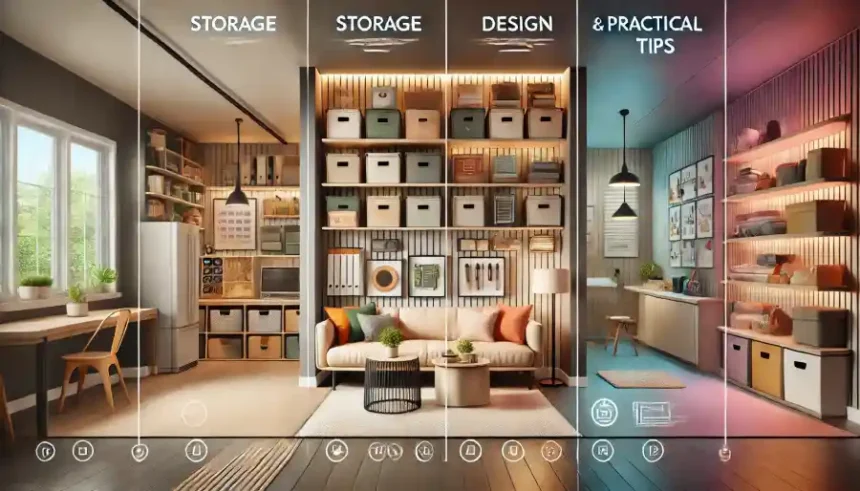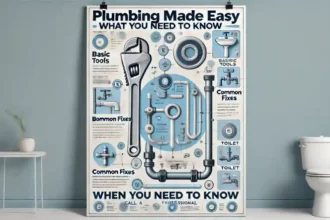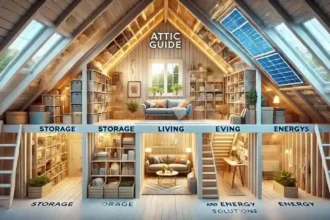Basement
The basement is one of the most versatile areas in any home. Whether it’s used as a storage space, a cozy retreat, or a vibrant entertainment hub, the possibilities are endless. Over time, homeowners have discovered that with the right planning and creativity, a basement can become one of the most valuable and functional parts of their house. From simple basement finishing projects to elaborate basement remodeling ventures, there’s a wealth of opportunities to explore.
In this guide, we’ll dive into basement ideas and basement design concepts to inspire your next project. Whether you’re dreaming of a modern home theater, a warm and inviting guest suite, or a sleek and efficient office space, this guide will help you navigate the ins and outs of basement renovation. We’ll also showcase some remodeled basements through compelling basement images, offering real-life examples of how ordinary basements have been transformed into extraordinary spaces.
No matter the size, shape, or current condition of your basement, this guide will equip you with practical tips, design inspiration, and essential knowledge to make the most of your home’s hidden potential.
Let’s unlock the possibilities together!
The Basics of Basements
A basement isn’t just an extra level of your home—it’s a space brimming with potential for storage, living, and more. Understanding its basics is key before starting any remodeling or finishing project.
Types of Basements
Not all basements are the same. Depending on your home’s design, location, and needs, you might encounter various types of basements, including:
- Unfinished Basements: Typically used for storage or utility purposes, with bare walls and floors.
- Finished Basements: Renovated and designed as living spaces such as guest rooms, offices, or entertainment hubs.
- Walkout Basements: With direct outdoor access, ideal for creating independent living spaces or rentals.
- Specialized Designs: For example, ranch home plans with basement, where basements are tailored to complement one-story living.
Common Basement Challenges
Basements often face unique challenges due to their location below ground level. Addressing these issues early can save time, money, and frustration in the long run.
Flooded Basements
- A common issue, especially in areas with heavy rainfall or inadequate drainage.
- Preventative measures, such as proper waterproofing and sump pump installation, are essential.
Basement Bugs
- Damp, dark environments can attract pests like spiders, centipedes, and silverfish.
- Regular maintenance, sealing cracks, and using dehumidifiers can keep these unwelcome guests at bay.
Mold and Air Quality Issues
- A critical concern for homeowners is, “Can mold in basement affect upstairs?” The answer is yes—poor ventilation and unchecked mold growth can lead to health hazards throughout the home.
- Regular inspections and proper ventilation systems are key to mitigating this risk.
Knowing your basement’s unique features helps you address issues like flooded basement or pests while planning enhancements such as those found in ranch home plans with basements. This foundation ensures you maximize its functionality and value.
Remodeling and Finishing Your Basement
Transforming your basement into a livable and functional space can add significant value to your home. Whether you’re tackling a full-scale basement remodeling project or planning a simpler basement finishing, understanding the process and costs is essential for success. Let’s explore the steps, costs, and creative ideas to bring your basement vision to life.
Why Remodel or Finish Your Basement?
A well-planned basement renovation can turn an underutilized area into a stylish and functional part of your home. Common reasons to remodel include:
- Adding livable space, such as guest rooms, offices, or playrooms.
- Increasing property value with a finished basement.
- Solving existing issues like dampness or poor lighting.
Showcasing basement renovation before and after examples can highlight how small updates or large overhauls can make a huge impact.
How to Finish a Basement
Finishing a basement involves several key steps:
- Plan and Permit:
- Research local building codes and secure any necessary permits.
- Choose a design plan that suits your needs and budget.
- Structural and Functional Preparations:
- Install basement replacement windows 30.5x 16 for natural light and ventilation.
- Waterproof the area to prevent future damage.
- Walls and Ceilings:
- Paint or finish walls. Painting concrete basement walls is a cost-effective option.
- Select attractive basement wall colors that enhance lighting and ambiance.
- Flooring and Lighting:
- Choose durable and moisture-resistant materials.
- Install lighting to brighten the space and make it inviting.
5. HVAC and Ventilation
- Extend HVAC Systems:
- Connect your basement to your home’s heating and cooling system.
- Consider adding a dedicated thermostat for better control.
- Install Ventilation:
- Use dehumidifiers or ventilation systems to maintain air quality.
- Ensure windows are operable for natural ventilation.
Basement Remodeling Costs
Understanding basement remodeling cost is crucial for budgeting. Costs can vary based on the extent of the renovation:
- Basic Finishing: Costs for simple DIY upgrades like painting and lighting.
- Comprehensive Remodeling: Expenses for adding rooms, plumbing, or higher-end materials.
Planning ahead helps you stay on track and get the most value for your investment.
Finishing a Basement DIY
For those who love hands-on projects, finishing a basement DIY can save money and offer creative control. Tasks like painting walls, installing shelves, and even minor electrical work are manageable with the right tools and research. Be sure to understand your limits and hire professionals for complex tasks like plumbing or electrical systems.
With the right mix of creativity and functionality, basement remodeling or finishing can transform the space into a practical and stylish asset that enhances your home.
Basement Flooring, Lighting, and Insulation
Creating a comfortable and functional basement requires attention to essential elements like flooring, lighting, and insulation. These features not only enhance the space’s aesthetics but also ensure it remains practical and enjoyable for everyday use. Let’s explore the best options and ideas for optimizing these critical components.
Basement Flooring: Durable and Stylish Options
Choosing the right basement flooring is crucial, as basements are often prone to moisture and temperature fluctuations. Here are some best basement flooring ideas to consider:
- Vinyl Plank Flooring: Durable, water-resistant, and available in various styles.
- Epoxy Coatings: Ideal for unfinished basements, offering a sleek, waterproof surface.
- Engineered Hardwood: A stylish option that withstands moisture better than solid wood. For many homeowners, the best flooring in a basement strikes a balance between functionality and aesthetics while staying within budget.
Basement Lighting: Brighten Your Space
Effective basement lighting can transform a dark, enclosed area into a bright, inviting space. Consider these basement lighting design tips:
- Overhead Lighting: Recessed or track lighting provides ample illumination without taking up space.
- Accent Lighting: Wall sconces or under-cabinet lighting create a cozy atmosphere.
- Natural Light Enhancements: Add windows or light wells to maximize natural light, especially in walkout basements. Strategic lighting choices can highlight key design elements while improving the room’s functionality.
Basement Insulation: Stay Warm and Comfortable
Proper basement insulation is essential for regulating temperature and improving energy efficiency. Here’s how to ensure your basement stays comfortable year-round:
- Spray Foam Insulation: Seals gaps and provides excellent thermal resistance.
- Rigid Foam Boards: Durable and effective against moisture buildup.
- Fiberglass Batt Insulation: Cost-effective and easy to install for finishing projects.
Insulating your basement also helps protect it from dampness and contributes to lower energy costs.
By focusing on the right basement flooring, basement lighting, and basement insulation, you can create a space that’s not only functional but also a pleasure to use. Thoughtful choices in these areas form the foundation of a basement that’s stylish, durable, and welcoming.
Basement Waterproofing and Maintenance
Proper basement waterproofing and regular maintenance are essential to keep your basement dry, safe, and functional. Addressing common issues like moisture, pests, and mold ensures your basement remains a valuable part of your home.
Why Waterproofing Matters
Basements are particularly vulnerable to water damage due to their below-ground location. Issues like flooded basements can lead to structural damage, mold growth, and costly repairs. Investing in waterproofing protects your home and prevents future problems.
Basement Waterproofing Tips
Here are some effective basement waterproofing tips to safeguard your space:
- Seal Cracks: Inspect walls and floors for cracks and use sealants to prevent water intrusion.
- Install a Sump Pump: This device helps remove water during heavy rains or flooding.
- Improve Drainage: Ensure gutters and downspouts direct water away from your foundation.
- Dehumidify the Space: Use a dehumidifier to reduce moisture and discourage mold growth.
Understanding Basement Waterproofing Prices
The cost of waterproofing varies based on the method and scope of work:
- Basic sealing: $500–$1,000.
- Interior drainage systems: $2,000–$5,000.
- Comprehensive exterior waterproofing: $5,000–$10,000 or more. Understanding these basement waterproofing prices helps you plan and budget effectively.
Tackling Common Maintenance Issues
- Basement Mold Remediation Cost: Mold is a frequent problem in damp basements, with remediation costs averaging $500–$6,000 depending on severity. Regular cleaning and ventilation can help prevent mold.
- Basement Bugs: Pests like spiders and silverfish thrive in damp environments. Use pest-proofing measures like sealing entry points and reducing moisture to keep your basement bug-free.
By prioritizing basement waterproofing and consistent maintenance, you can avoid costly repairs and create a safer, healthier environment. Whether addressing flooded basements or preventing mold and pests, these proactive steps protect your home and enhance its value.
Design Ideas for Every Basement
Your basement holds endless possibilities, whether it’s a cozy retreat, a family-friendly space, or an entertainment hub. Thoughtful basement design and creative basement ideas can transform this area into a functional and stylish part of your home. From small updates to complete renovations, here are inspiring concepts to fit any style or need.
Maximizing Space: Small vs. Large Basements
Small Basement Ideas:
- Use light-colored walls and mirrors to make the space feel larger.
- Opt for multipurpose furniture, like a sofa bed or built-in storage benches.
- Add compact features, such as a mini basement bar or a corner basement office.
Large Basement Ideas:
- Create zones for different activities, such as a basement gym, a lounge area, or a basement playroom.
- Install features like a full basement kitchen or a home theater for hosting events.
- Consider adding a guest suite with a basement bedroom and basement bathroom for ultimate functionality.
Style Inspiration: Modern vs. Traditional Designs
Modern Basement Design:
- Clean lines, neutral tones, and sleek materials.
- Incorporate smart technology for lighting and entertainment.
- Open layouts that maximize natural light and minimalistic decor.
Traditional Basement Design:
- Rich, warm tones with classic furniture.
- Add touches like wainscoting, coffered ceilings, and vintage lighting fixtures.
- A fireplace or cozy seating area enhances a traditional ambiance.
Functional Spaces for Every Need
Transforming your basement into a specific functional space can enhance its utility and cater to your unique lifestyle. Whether it’s creating a cozy guest suite, an entertainment hub, or a productive work environment, here’s how to design functional basement spaces for every need.
Basement Bedroom
A basement bedroom is perfect for hosting guests or providing a private retreat for family members. Make the space inviting and functional with these tips:
- Soft Lighting: Use layered lighting, such as recessed lights paired with bedside lamps, to create a warm and cozy atmosphere.
- Plush Bedding: Choose high-quality bedding with soft textures and neutral tones to make the space feel luxurious.
- Storage-Friendly Furniture: Incorporate built-in wardrobes or under-bed storage to maximize space without clutter.
- Ventilation: Ensure proper airflow and consider installing an egress window for safety and natural light.
Basement Bathroom
Adding a basement bathroom increases convenience and makes the basement more self-sufficient. Focus on materials and layout for a practical and stylish design:
- Essentials: Include a shower, toilet, and vanity. Compact fixtures work well in smaller spaces.
- Moisture-Resistant Materials: Opt for tile or vinyl flooring and waterproof paint to withstand the humid basement environment.
- Ventilation: Install an exhaust fan to prevent moisture buildup and reduce the risk of mold.
- Lighting: Use bright, functional lighting to ensure the bathroom feels open and welcoming.
Basement Kitchen
A basement kitchen is ideal for entertaining or as part of a fully livable basement suite. Keep functionality in mind with these ideas:
- Compact Layouts: Include essential appliances like a fridge, sink, and microwave. Use space-saving designs for smaller basements.
- Counter Space: Incorporate a functional countertop for food prep and casual dining.
- Storage: Install cabinets and shelving to organize kitchen tools and supplies.
- Lighting: Under-cabinet lighting adds a modern touch while improving visibility.
Basement Bar
A basement bar creates a stylish entertainment area for gatherings. Whether small or grand, here’s how to design one:
- Wet Bar or Counter: Install a sink, mini-fridge, and counter space to mix drinks easily.
- Bar Stools: Add comfortable seating to enhance the social aspect.
- Shelving and Storage: Modern open shelving or glass cabinets provide storage and display for drinkware and bottles.
- Lighting: Use accent lighting, like LED strips under counters, to create ambiance.
Basement Home Theater
Turn your basement into a home theater for immersive movie nights and gaming sessions. Focus on comfort and acoustics:
- Seating: Choose plush recliners or sofas with ample cushioning for long viewing sessions.
- Surround Sound: Install high-quality speakers for a cinematic experience.
- Lighting: Use dimmable lights or LED strips to enhance the ambiance while keeping glare off the screen.
- Soundproofing: Add acoustic panels or insulation to minimize noise escape and improve sound quality.
Basement Gym
A basement gym lets you stay fit without leaving home. Design the space for maximum functionality:
- Durable Flooring: Use rubber mats or interlocking tiles to protect floors and absorb impact.
- Mirrors: Add wall-mounted mirrors to create the illusion of more space and assist with form during workouts.
- Equipment: Include essentials like weights, resistance bands, a treadmill, or yoga mats.
- Ventilation: Keep the area well-ventilated to maintain a fresh environment.
Basement Playroom
A basement playroom provides a safe and fun space for children to enjoy. Design the area with their needs in mind:
- Colorful and Engaging Decor: Use bright colors and themes that spark imagination.
- Ample Storage: Include bins, shelves, or built-in units to store toys and games.
- Interactive Features: Add a chalkboard wall, climbing structures, or an activity table.
- Safety First: Use padded flooring and rounded furniture to prevent injuries.
Basement Office
A basement office offers a quiet, productive environment for remote work or studying. Here’s how to create one:
- Ergonomic Furniture: Invest in a comfortable chair and desk that supports proper posture.
- Natural Light: Position your workspace near a window or use daylight-mimicking bulbs.
- Storage: Use file cabinets, shelves, or hidden storage to maintain organization.
- Tech-Friendly Setup: Ensure access to electrical outlets and reliable internet for uninterrupted work.
Themed Basements for Unique Experiences
Sports Basement Santa Rosa:
- Showcase memorabilia or a mini indoor court for sports enthusiasts.
- Add a lounge area with multiple screens for watching games.
Basement Game Room:
- Pool tables, arcade machines, and board games create a fun atmosphere.
- Include seating and snack areas for a complete entertainment space.
Basement Renovation Before and After
Transformations often speak louder than words. Check out basement renovation before and after examples to see how outdated basements can evolve into beautiful and functional spaces. These real-life projects can inspire your next remodel and help visualize what’s possible.
Storage and Functional Solutions
Effective basement storage is essential to keeping your space organized and clutter-free. With a little creativity, your basement can serve as a storage haven while maintaining its aesthetic appeal.
Basement Storage Solutions:
- Install shelving units along walls to maximize vertical space.
- Use built-in cabinets or under-stair storage for a seamless look.
- Incorporate modular storage systems for flexibility and easy rearrangement.
Dropped Ceilings for Basements:
- Use dropped ceilings to hide wiring, plumbing, or ductwork while creating a polished finish.
- Add recessed lighting or access panels to maintain both functionality and style.
Cultural and Unique Basement References
Basements have often been referenced in pop culture and unique contexts. Here are some examples that resonate with enthusiasts across various domains:
- Jahani Basement Fallout 4 Location: A nod to gamers, this Fallout 4 reference sparks intrigue and exploration.
- Elliott Smith’s From a Basement on the Hill: A powerful album that metaphorically connects creativity and the depth of basements.
- Columbine Killers Basement Tapes: A historical and somber topic often discussed in the context of true crime.
- When I Get My Hands on You Basement Tapes: A song from the iconic Basement Tapes project, celebrating collaboration and artistry.
- Basement Dwellers Trump: A term often used in social commentary, reflecting cultural and political connotations.
Real-Life Examples and Gallery
Looking for inspiration? These real-life examples of basement renovation showcase what’s possible with thoughtful planning and creativity:
- Basement Renovation Before and After: Witness the transformation of dark, unused basements into bright, functional spaces. From simple updates to complete overhauls, these projects offer practical insights and design ideas.
- Basement Images: Browse a gallery of inspiring basement ideas, featuring innovative layouts and stunning designs.
- Remodeled Basements: See how others have reimagined their basements into gyms, offices, or entertainment spaces.
Practical Additions
Adding essential features can make your basement more livable and self-sufficient:
- Toilet for Basement: Install compact or upflush toilets that work well in limited spaces.
- Toilet in Basement: A practical addition for convenience, especially in fully finished or guest suite basements. Consider moisture-resistant materials and efficient plumbing options.
Conclusion
Basements are more than just extra space—they are opportunities to enhance your home’s functionality and value. Whether you’re exploring basement remodeling, basement finishing, or simple upgrades, the possibilities are endless.
From basement renovation before and after transformations to functional spaces like gyms and offices, every project brings you closer to realizing your home’s full potential. With the right vision, your basement can become a stunning, practical extension of your living space.












